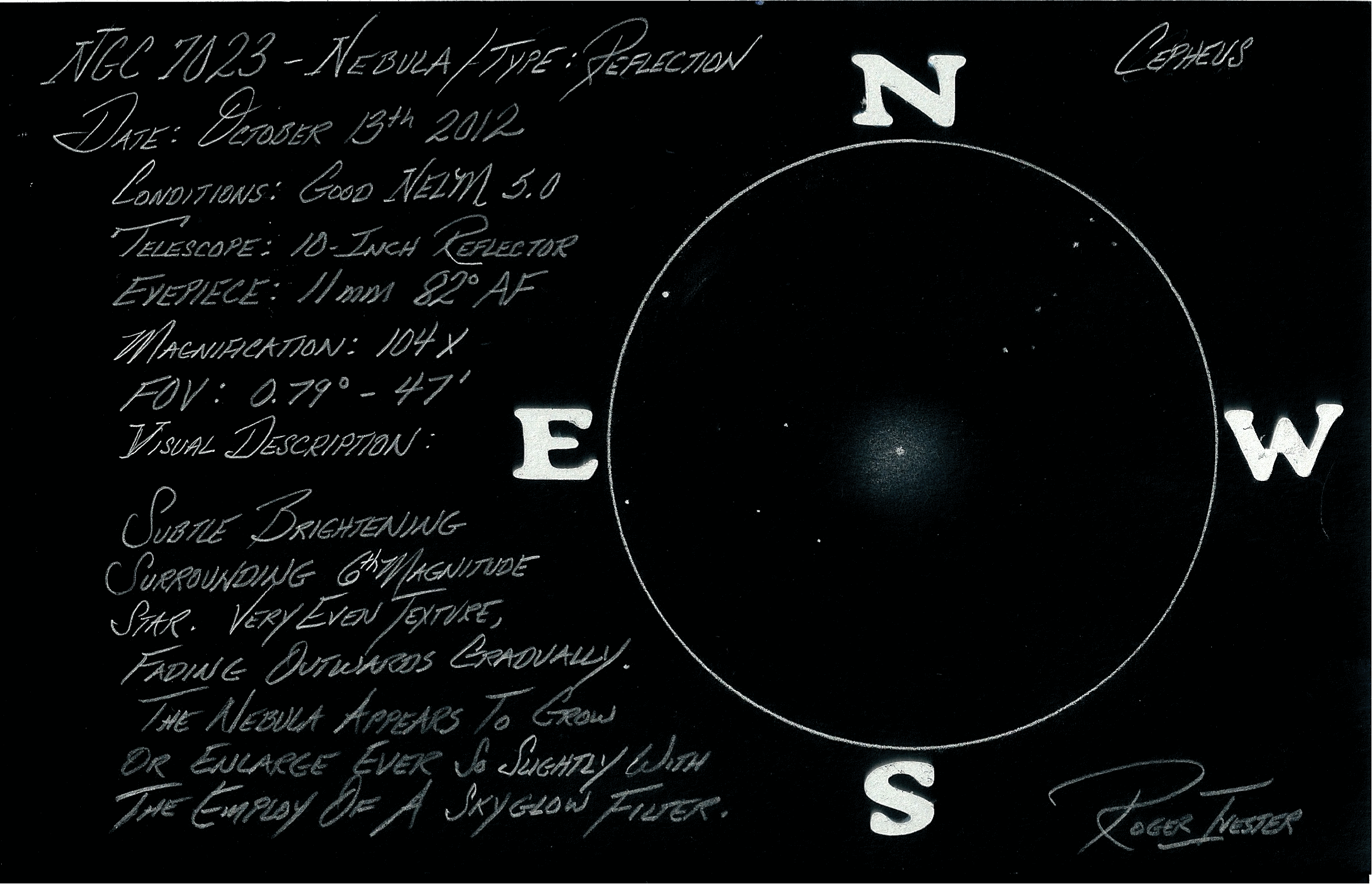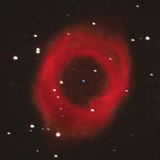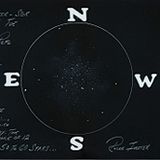
NGC-7023 - A challenging yet rewarding late summer, early fall reflection nebula to look for in Cepheus
An excellent, but challenging late summer or early fall reflection nebula would have to be NGC-7023, located in Cepheus. A reflection nebula is a cloud of interstellar gas and dust whose spectrum contains absorption lines characteristic of the spectrum of nearby illuminating stars. The emission component of its spectrum is produced by excited gas; the absorption spectrum is starlight reflected by the dust.
This faint nebula surrounding a magnitude 7 star can be found about 3° SW of double star, Beta Cephei. Because it can be quite difficult to observe, due to the fairly large size and diffuse texture, it's an object that is often neglected by most amateurs.
When using a 10-inch reflector and observing from my moderately light-polluted backyard, this nebula appears as a very subtle glow around the illuminating star. The shape is mostly round, and the edges fade very gradually outward. The nebula is slightly improved and enlarged when adding an Orion Skyglow filter.
The following is a pencil sketch that I made on a blank 5 X 8 note card with the colors inverted with the use of my scanner. Please note that a broadband or light pollution filter (Orion SkyGlow) was used for this sketch:

Pencil Sketch
Jaakko Saloranta of Finland, "using an 8-inch Orion DSE reflector at 150x could see a bright nebula, surrounding a 7th magnitude star (HD 200775) with a complex structure. The brightest part appears around and north of the bright star with another brighter area visible south. The nebulosity also seems a bit fainter on the E and W sides." Sue French of New York, with a 130 mm refractor said, "At 23X, there was a bright glow around a fairly bright star. At 63X, the southern part showed nicely, and there was a faint star in it. A UHC or O-III filter was not helpful. At 102X, the southern part was curved concave so the whole thing looked like a fat comma in my mirror-reversed view."
Brad Ivester of Nevada, using a 10-inch reflector said, "At a magnification of 57X, the nebula appeared little more than a faint haze around a fairly bright star." Fred Rayworth of Nevada, using a 16-inch reflector at a magnification of 102X could see a faint haze around a mag. 7 star, and also said that the use of a UHC or an O-III filter didn't help at all. It should be noted that not all nebula can be observed or seen with a nebula filter, however there are many that require one.
The following image was made using three hour-long exposures over the nights of October 12, & 14, 2012 with a SBIG ST-2000 XCM CCD camera. The scope used was a 102 mm (4-inch) APO refractor at f/6.3. The seeing was around 2 arc seconds and the transparency was excellent from my west Kauai location. Image by Dr. James Dire:

Image by Dr. James Dire
The Cocoon nebula, IC 5146 in Cepheus requires either a hydrogen-beta or a UHC, and the Crescent nebula, NGC 6888 in Cygnus requires an O-III, and the list goes on. It is depending on the type of nebulae as to what type of filter works best. There are two major types of filters for deep-sky nebulae. One is called a narrowband and the other is a broadband. This is a very broad subject and could not possibly be reviewed or explained in this article. If you are interested in purchasing a filter, please contact Orion Telescope and Binocular for help. They will be able to provide you with all the information you need.
Good luck with your nebulae search! Roger Ivester
Are you a visual observer? Send a picture of your sketch to Orion's Facebook Page and we will share it.
Roger Ivester has enjoyed the wonders of the night sky since he was 12 years old. He is a visual observer and enjoys sketching and writing about what he sees. In 2009 he helped start the Las Vegas Astronomical Society Observers Challenge, and works with Fred Rayworth on a monthly basis to compile the report. Roger and his wife Debbie live in the foothills of western North Carolina.

















